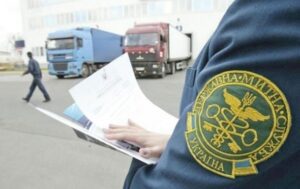
The Convention on the Joint Transit Procedure (CCTP) or the so-called “customs visa-free” for Ukraine came into force on Saturday: goods are already flowing into and out of the country under such a procedure, the Ministry of Finance reported.
“Today, October 1, Ukraine entered into force and business opened up the possibility of international movement of goods with 35 other participating countries under one transit document,” the press release says.
The Ministry of Finance clarified that the first country from which the cargo was sent for delivery to Ukraine under the joint transit procedure was Germany: Ukrainian customs officers already see the T1 transit declaration in the NCTS electronic transit system and are waiting for the truck to arrive.
In Ukraine, the first transit declaration for leaving the country was also issued: according to it, the cargo now follows through Poland to Germany.
Currently, the system is also awaiting the arrival of goods at the customs office of departure and other declarations, according to which the goods will be placed under the joint transit procedure and delivered to the customs offices of destination on the territory of the countries participating in the Convention, the report says.
The Ministry of Finance recalled that in accordance with the “customs visa-free” for the delivery of goods from one country to another, a single transit document is submitted: from the customs office of departure to the customs office of destination. This speeds up the passage of customs formalities at the border and reduces the associated costs for businesses. According to the forecast of the Directorate General for Taxation and Customs Union of the European Commission (DG TAXUD), Ukraine can enter the top ten countries in terms of the number of transit declarations.
“Customs is responsible for controlling the goods. We in the EU are striving to spend less time for control at the border, and more inside the country. In Ukraine, so far, most goods travel without checking inside the country – all control work takes place directly at the border. Therefore, queues form at the border. NCTS solves most of this problem: it is possible to submit a declaration to the system in advance, after checking inside the country, to put the necessary seals that are recognized in the EU. Then at the border, you only need time to read the barcode number, as it is done in a supermarket,” summed up the international expert of the Program for Public Financial Management in Ukraine (EU4PFM) Vytenis Alishauskas.
Ališauskas, CUSTOMS, customs visa-free, MINISTRY OF FINANCE, TRANSIT